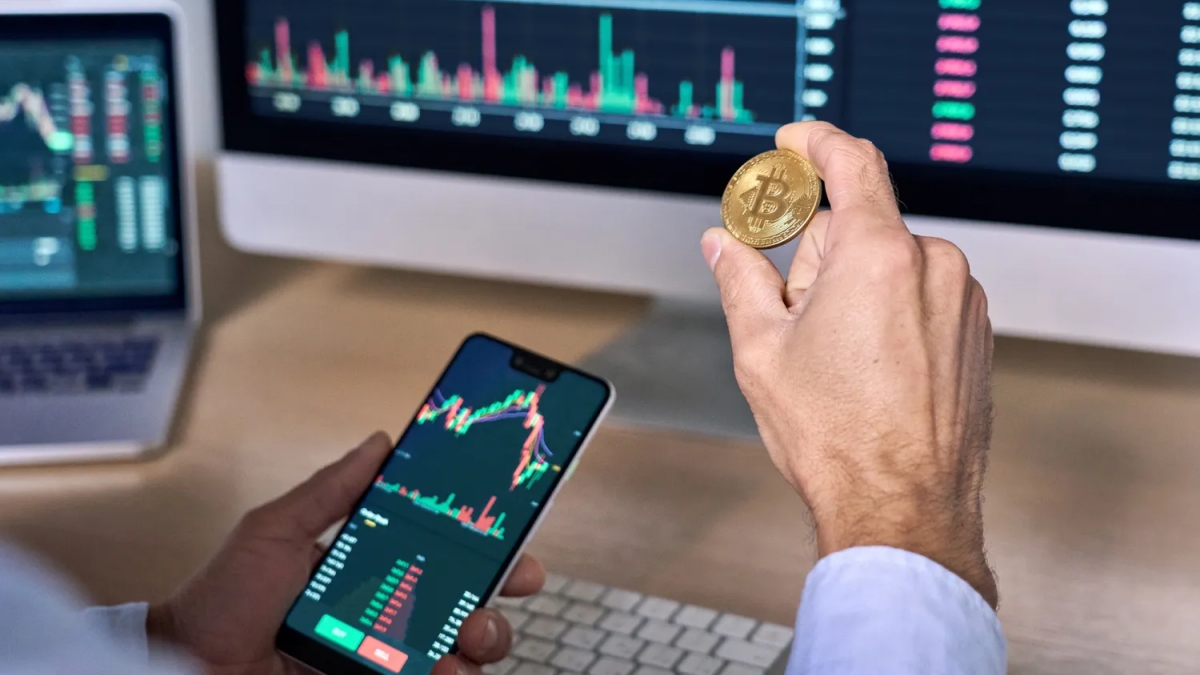
The Stock to Flow (S2F) model, revered by many for predicting Bitcoin’s value, emphasizes scarcity as a primary value determinant. But how reliable is it for investors? Freelancers and gig workers are increasingly opting to receive payment in Bitcoin, as they appreciate the advantages of fast cross-border transactions and potential for cryptocurrency appreciation.
Table of Contents
Why the Stock to Flow Model Matters for Bitcoin
The Stock to Flow (S2F) model is pivotal in understanding Bitcoin’s inherent value, primarily due to the cryptocurrency’s unique properties. At its core, the S2F model evaluates the current stock (or existing supply) of an asset against its annual production rate, or flow. This concept isn’t new; commodities like gold and silver, which have limited supplies, have been assessed using this metric for years. But when applied to Bitcoin, it offers intriguing insights, especially given the digital coin’s capped supply and halving mechanism.
One of the most distinguishing characteristics of Bitcoin is its limited supply. Unlike traditional currencies, which central banks can print in response to economic needs, Bitcoin has a fixed cap set at 21 million coins. This scarcity is hardcoded into its protocol, making it resistant to inflation. As more bitcoins are mined and enter circulation, the flow (or production rate) decreases, but the stock continues to grow until the maximum supply is reached.
Another factor amplifying the relevance of the S2F model to Bitcoin is the periodic halving events. Every four years or so, the rewards given to Bitcoin miners for verifying transactions and adding new blocks to the blockchain are cut in half. This effectively reduces the new supply, or flow, entering the market. These halving events, predictable in their occurrence, have historically resulted in significant shifts in Bitcoin’s stock to flow ratio. The reduction in flow, combined with a growing stock, makes Bitcoin increasingly scarce over time. This growing scarcity, as posited by the S2F model, can lead to an increase in value.
Comparing Bitcoin with traditional assets further accentuates the significance of its stock to flow ratio. Gold, often referred to as a ‘store of value’, has a high S2F ratio due to its limited supply and low production rate. In many ways, Bitcoin, dubbed as ‘digital gold’, mirrors these characteristics. Its digital nature combined with its capped supply positions it as a potential hedge against traditional financial systems, much like gold has been for centuries.
Final Thoughts: Is the Stock to Flow Model Reliable for Bitcoin Investors?
The Stock to Flow (S2F) model, while influential and popular among cryptocurrency enthusiasts, is not without its challenges. As an investor, understanding both its strengths and weaknesses is essential to make informed decisions.
At its heart, the S2F model excels in spotlighting Bitcoin’s scarcity. The model underscores the unique proposition Bitcoin offers with its capped supply, which stands in stark contrast to traditional fiat currencies susceptible to inflation. The predictable nature of Bitcoin’s halving events and its impact on supply also lends credence to the model’s forecasts. Historically, the S2F model has had a decent track record, with Bitcoin’s price movements aligning reasonably well with its predictions.
However, no single model can encapsulate the full range of variables influencing an asset as dynamic as Bitcoin. The S2F model heavily leans on scarcity as a determinant of value. But is scarcity alone enough? The value of any asset, Bitcoin included, is also a function of its utility, demand, and broader market conditions. External factors such as regulatory changes, technological advancements, competition from other cryptocurrencies, and shifts in global economic landscapes can significantly influence Bitcoin’s value, rendering predictions based solely on scarcity incomplete at best.
Moreover, as we move closer to Bitcoin’s maximum supply, the model might face challenges. The flow, or rate of new Bitcoins entering the market, will eventually taper down, making the ratio approach infinity theoretically. Such a scenario could test the limits of the S2F model’s applicability.
While the Stock to Flow model provides valuable insights into potential price trajectories based on scarcity, it should not be the sole compass guiding Bitcoin investment. Investors are best served by adopting a multifaceted approach, taking into account various models, market analyses, and staying updated with the ever-evolving cryptocurrency landscape.
Conclusion
While the S2F offers valuable scarcity-based insights into Bitcoin’s potential value, a holistic approach, considering multiple factors and models, remains paramount for investors.